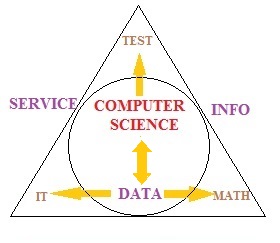A 55-year-old man presents to the clinic with complaints of chest p...
Question
A 55-year-old man presents to the clinic with complaints of chest pain. He states that for the last 5 months he has noted intermittent substernal chest pressure radiating to the left arm. The pain occurs primarily when exercising vigorously and is relieved with rest. He denies associated shortness of breath, nausea, vomiting, or diaphoresis. He has a past medical history of HTN and hyperlipidemia. He is taking atenolol for his high blood pressure and is eating a low-cholesterol diet. His family history is notable for a father who died of MI at 56. He has a 50 pack-year smoking history and is currently trying to quit. His physical examination is with normal limits with the exception of his BP of 145/95. His HR is 75.
What is the likely diagnosis?
What is the most common causes of this disease? What is the pathogenesis of his symptoms?
What are the patient’s risk factors?
What EKG finding would be concerning? What would be reassuring?
Would you call EMS about this pt? Why or Why not? If not, what other symptoms would he need for you to call?
Aagaard, E. A. (2003). Blood Disorders. In S.J. McPhee, V.R. Lingappa, & W.F. Ganong (Eds.), Pathophysiology of disease. An introduction to clinical medicine. New York: Lange Medical Books/Mc Graw-Hill
What is the likely diagnosis?
What is the most common causes of this disease? What is the pathogenesis of his symptoms?
What are the patient’s risk factors?
What EKG finding would be concerning? What would be reassuring?
Would you call EMS about this pt? Why or Why not? If not, what other symptoms would he need for you to call?
Aagaard, E. A. (2003). Blood Disorders. In S.J. McPhee, V.R. Lingappa, & W.F. Ganong (Eds.), Pathophysiology of disease. An introduction to clinical medicine. New York: Lange Medical Books/Mc Graw-Hill
Solution Preview
These solutions may offer step-by-step problem-solving explanations or good writing examples that include modern styles of formatting and construction of bibliographies out of text citations and references.
Students may use these solutions for personal skill-building and practice.
Unethical use is strictly forbidden.
* What is the likely diagnosis?
Ans: The chest pain may be related to cardiac, pulmonary, vascular, GI, and musculoskeletal problems. Patient’s family history suggests that it may be associated with heart disease. Based on the specific symptoms observed in patient such as intermittent chest pain which is substernal pressure radiate to arm especially left, primarily brought by exercise and subsides after rest, so the stable angina is most likely diagnosis (Abrams, J. 2005). These symptoms may also be associated with aortic stenosis and myocardial ischemia but these diseases accompanied with shortness of breath, dizziness, nausea or diaphoresis but patient denied about these.
Ans: The chest pain may be related to cardiac, pulmonary, vascular, GI, and musculoskeletal problems. Patient’s family history suggests that it may be associated with heart disease. Based on the specific symptoms observed in patient such as intermittent chest pain which is substernal pressure radiate to arm especially left, primarily brought by exercise and subsides after rest, so the stable angina is most likely diagnosis (Abrams, J. 2005). These symptoms may also be associated with aortic stenosis and myocardial ischemia but these diseases accompanied with shortness of breath, dizziness, nausea or diaphoresis but patient denied about these.
This is only a preview of the solution.
Please use the purchase button to see the entire solution.
Please use the purchase button to see the entire solution.
By purchasing this solution you'll be able to access the following files:
Solution.docx
Purchase Solution
$40.50







View Available
Medicine and Nursing Tutors 640 tutors matched

Ionut
(ionut)
Master of Computer Science
Hi! MSc Applied Informatics & Computer Science Engineer. Practical experience in many CS & IT branches.Research work & homework
5/5 (6,804+ sessions)
1 hour avg response
$15-$50 hourly rate
Pranay
(math1983)
Doctor of Philosophy (PhD)
Ph.D. in mathematics and working as an Assistant Professor in University. I can provide help in mathematics, statistics and allied areas.
4.6/5 (6,681+ sessions)
1 hour avg response
$40-$50 hourly rate
Leo
(Leo)
Doctor of Philosophy (PhD)
Hi!
I have been a professor in New York and taught in a math department and in an applied math department.
4.9/5 (6,428+ sessions)
2 hours avg response